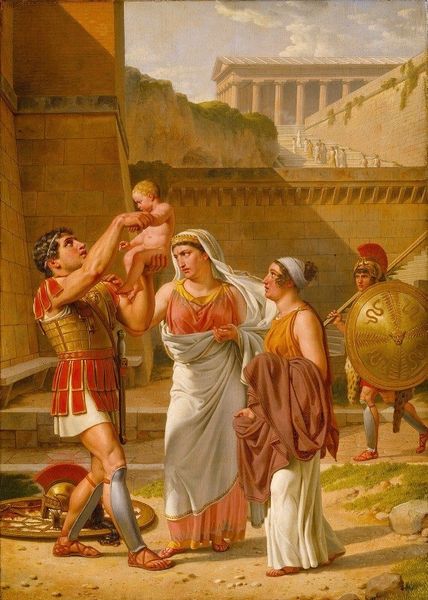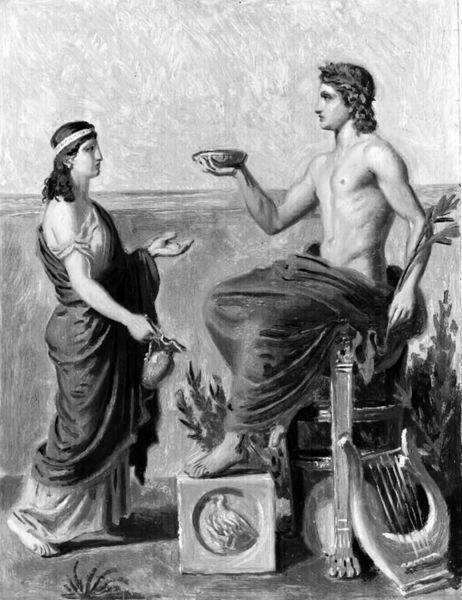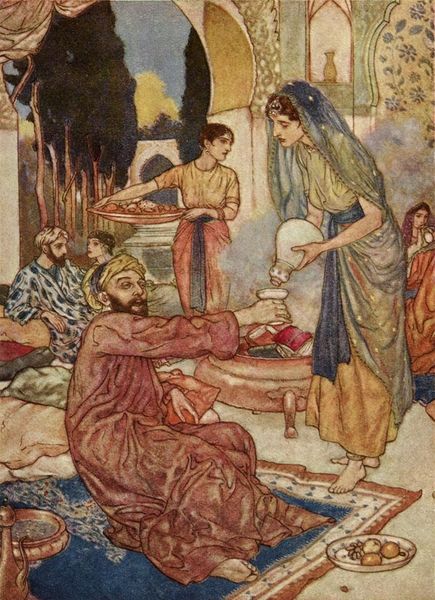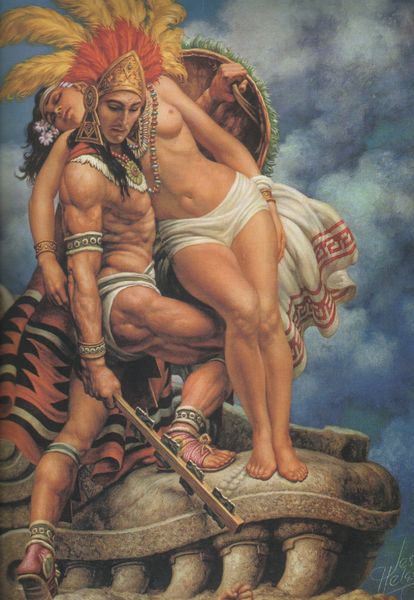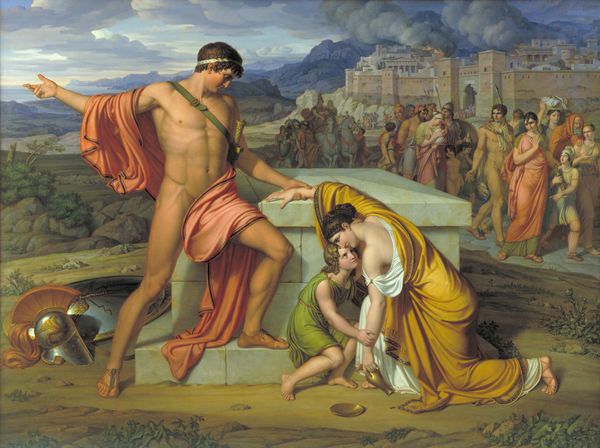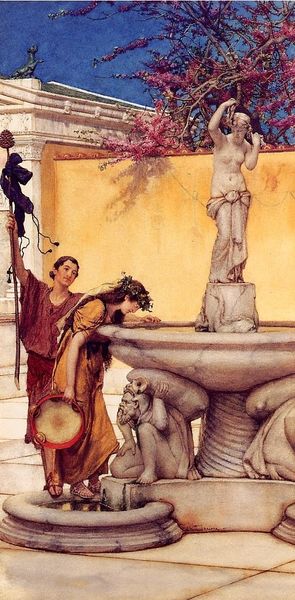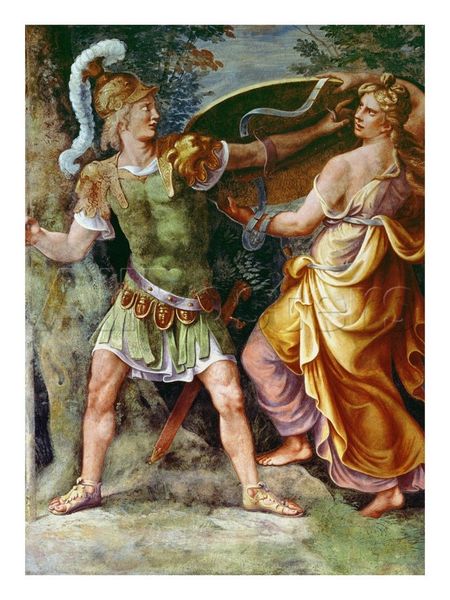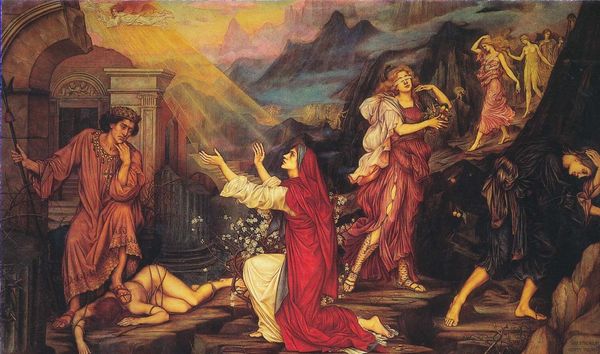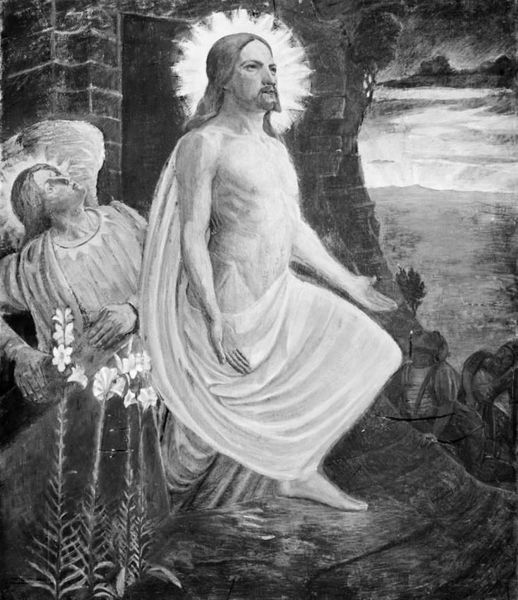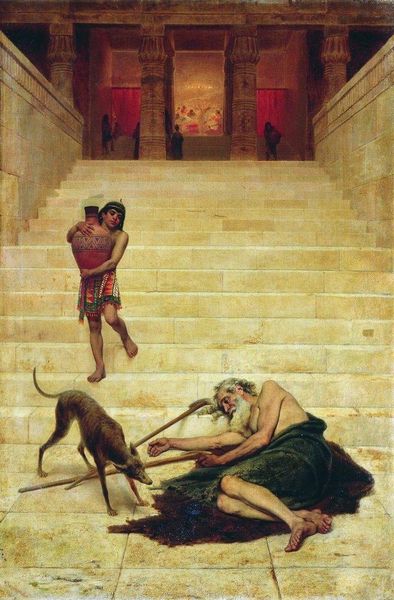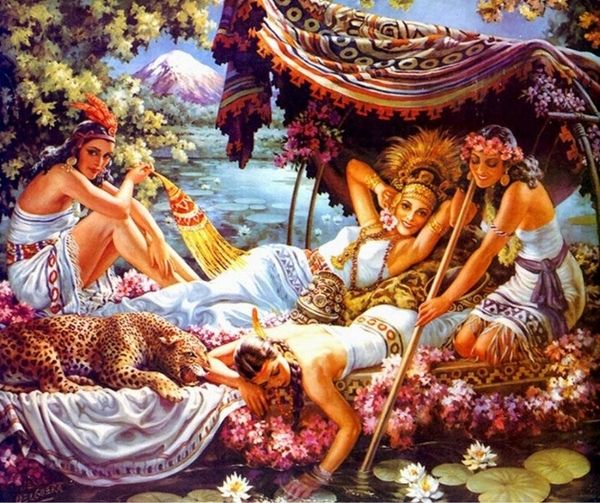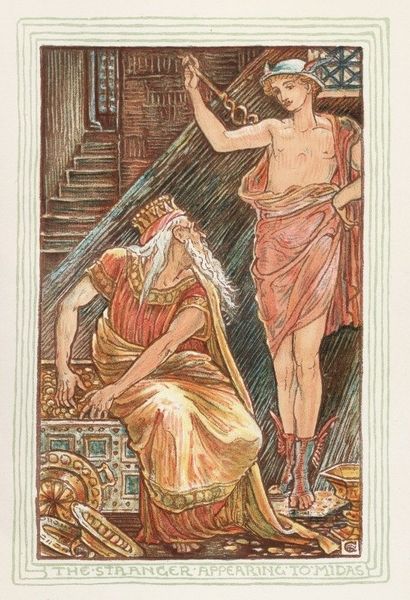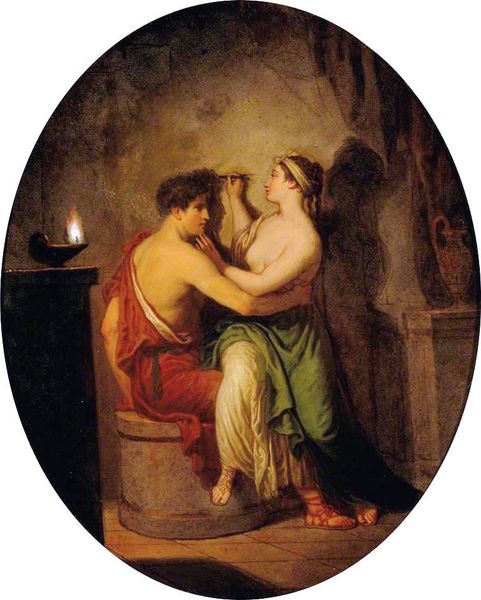
painting
#
narrative-art
#
painting
#
figuration
#
romanticism
#
mythology
#
genre-painting
Copyright: Public domain
Raja Ravi Varma painted "Urvashi and Pururavas" sometime in the late 19th or early 20th century. Varma was an Indian painter who blended European academic art with Indian subject matter. Here, we see Pururavas reaching up to grasp the sari of the celestial nymph Urvashi. The story comes from the Hindu Vedas. The scene reflects a moment of connection between the earthly and heavenly realms. Consider the social context. Varma's work gained popularity as printed reproductions, making art accessible to a broader public. He was part of a rising nationalist movement, and was trying to define and create a modern Indian identity through art. His paintings often depicted scenes from Hindu mythology, imbuing them with a sense of realism and grandeur. The establishment of art schools under British rule also influenced Varma's style, which merged Western techniques with Indian aesthetics. Analyzing Varma's work through historical resources such as colonial records, art journals, and biographical accounts enriches our understanding of art’s social and institutional context.
Comments
No comments
Be the first to comment and join the conversation on the ultimate creative platform.
